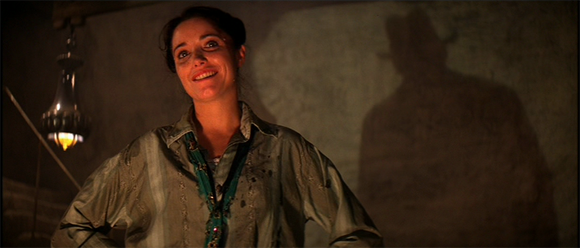There’s An All-Female Team of Spelunking Scientists Making Amazing Discoveries Right This Very Moment
she blinded me with science

A veritable treasure trove of prehistoric bones is discovered. A small team is needed to retrieve what could be evidence of a new human ancestor. The chosen few have to be scientists and experienced cavers. Of the 57 applicants, six were selected for this highly dangerous mission. And they all just so happen to be women.
Female Scientist Avengers: Assemble!
An all-female team of spelunking scientists—God, I love that sentence—has ventured into the depths of a cave 25 miles north of Johannesburg, South Africa and brought to the surface hundreds of fossils, including a skull fragment from what paleoanthropologists believe could be a new group of hominins. Recreational cavers initially discovered the prehistoric haul and got in touch with National Geographic Explorer-in-Residence Lee Berger, who helped put together the Rising Star Expedition. But the six people actually venturing into the cave can’t just have scientific know-how. Says Berger of these “underground astronauts”:
“They had to be masters of phDs in paleontology, archaeology, or a related science. They had to have field experience, they had to have caving experience, and they had to be able to fit through an eighteen centimeter space. It ended up that the most qualified human beings on the planet to do this very dangerous, very remarkable job were young women. And they’re gonna go down and they’re gonna recover what I hope are some of the most extraordinary human ancestor fossils ever found.”
Your female scientist Avengers are Lindsay Eaves, Marina Elliott, Elen Feuerriegel, Alia Gurtov, Hannah Morris, and Becca Peixotto.
Says Elliot:
”It’s still a dangerous environment despite all the prep that we’ve done, and the more comfortable we feel the better. I’m just tickled pink to be here. It’s amazing. The chance of a lifetime.”
Gurtov, a University of Wisconsin grad student, “hominin behavioral analyst,” and “avid sci-fi reader” (pause for swooning), has even been Tweeting about the expedition:
Cuddled the cranium all morning, then made first run carrying fossils entire way. Getting the hang of this! #RisingStar2013 #fossil #hominin
— Alia Gurtov (@AGurtov) November 15, 2013
I’m late to the update party: CRANIUM IS OUT! No revealsies until tomorrow, though. Needs pampering. #risingstarexpedition @NatGeoExplorers
— Alia Gurtov (@AGurtov) November 15, 2013
I’ll be coming home with a personalized memento. Archaeologists dig scars, right? #risingstarexpedition #caving #fossil #hominin
— Alia Gurtov (@AGurtov) November 17, 2013
There’s no word yet on the evolutionary origin of the 200-some fossils—including a cranium and part of a jawbone—retrieved so far; according to Berger a paper will probably be published in late 2014. But the expedition has also yielded a more immediate benefit. Writes the University of Wisconsin’s John Hawks, one of the team’s leaders:
“I’ve had an extraordinary number of new fossils pass through my hands in the last four days. But here’s what finally brought me to tears: Our young scientists and cavers running up to the command center, cranking up the generator, so they could do a spontaneous Skype call to a third grade class in Rhode Island.”
No, I’m not crying. I just have something in my eye. And it’s SCIENCE.
Are you following The Mary Sue on Twitter, Facebook, Tumblr, Pinterest, & Google +?
Have a tip we should know? tips@themarysue.com